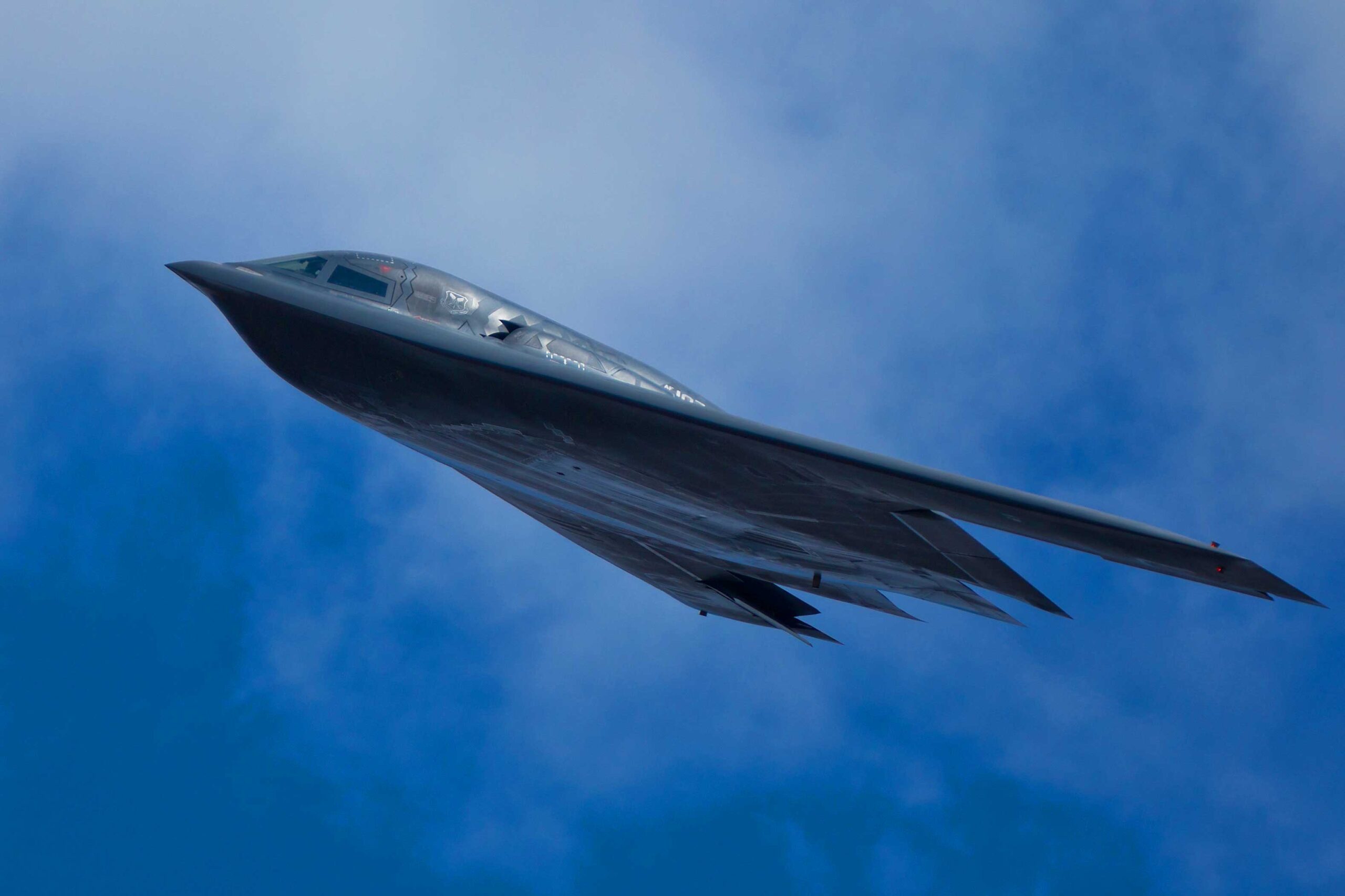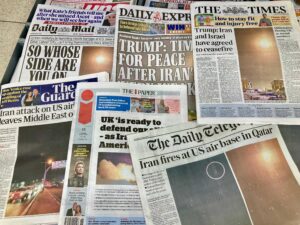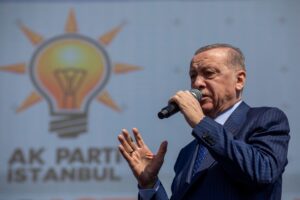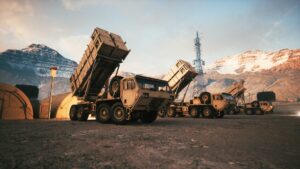In the early hours of 22 June 2025 (Tehran time), the United States launched a high-precision military strike against three of Iran’s most critical nuclear sites—Fordow, Natanz, and Isfahan. B‑2 stealth bombers dropped Massive Ordnance Penetrators on hardened underground facilities,[i] while Tomahawk cruise missiles were fired from naval vessels in the Persian Gulf. The operation marked the most forceful direct U.S. attack on Iranian territory—and arguably, the most extensive strike ever conducted on Iran’s nuclear infrastructure. U.S. President Donald Trump declared that the mission was a “spectacular success”[ii] and claimed that it had obliterated Iran’s capabilities to enrich uranium going forward.
Despite U.S. officials having emphasized the technical details of the operation, there are much more important systemic consequences to consider. These are currently unfolding across diplomatic corridors, proxy alliances, cyber networks, and the energy markets. In the month since the strikes, emerging evidence reinforces what complexity theory has long warned: preventive wars rarely proceed according to plan, and their systemic reverberations are never confined to their intended targets. What matters now is not what the strikes destroyed, but how the shock is being metabolized across a volatile geopolitical ecosystem.
What complexity reveals beyond deterrence?
The traditional theory of deterrence would assess success through linear criteria, including whether it halted progress in Iran’s nuclear program, deter further escalation, and restore U.S. credibility in the region and beyond. Strategic relationships in today’s Middle East are, however, far from linear. The geopolitical environment is crowded with actors who are adaptive, and whose actions and reactions exist on multiple levels.
President Trump’s decision to attack Iran emerged in the context of intersecting strategic developments. Israel’s intensifying war with Hamas and Hezbollah, a nuclear nonproliferation regime that failed to curb Iran’s weapons manufacturing ambitions, Russia’s resurgence as a more assertive player in the region, and the accelerating competition for influence between Washington and Beijing are all played a role in it. These dynamics resemble not a chessboard of rational actors, but a complex adaptive system—a web of feedback loops and evolving strategies.
To understand this environment, we need more than conventional realism. This author’s own International Relations Complex Mechanism (IRCM) framework[iii]—developed precisely for such cases—maps unintended consequences, rebound dynamics, nonlinear escalation, and circuitous strategic effects.[iv]
In this framework, causality is not sequential or deterministic. It is interactive, adaptive, and often paradoxical. Strategic intent is only one strand in a web where signaling failures, adaptation, and structural interdependence generate outcomes far beyond initial design.
Mapping the possible outcomes
A month on, the early contours of these outcomes are becoming visible. IRCM distinguishes four categories of repercussions—each analytically distinct, yet dynamically entangled.
At the tactical level, the U.S.’ goal was to destroy Iran’s uranium enrichment capabilities and demonstrate its deterrence. Notwithstanding, deterrence is a fundamentally relational dynamic shaped by perceptions as well as the adaptive response of adversaries. Iran has already announced plans to expedite uranium enrichment at undisclosed facilities and signaled it may consider withdrawal from the Non-Proliferation Treaty. These moves suggest that physical damage alone rarely secures strategic compliance.
More concerning are the unintended rebound effects now taking shape. U.S. bases remain on high alert,[v] expecting Iranian-backed militias in Iraq to attack U.S. positions near Erbil and Baghdad. The Houthis have also threatened renewed strikes against Red Sea shipping.[vi] Hezbollah is posturing itself carefully, but Israel has prepared for the mobilization of elements of the group’s southern command,[vii] leaving the door open for the reopening of armed struggle. Meanwhile, Tehran’s political circles have hardened. The Islamic Revolutionary Guard Corps (IRGC) has tightened its grip over nuclear policy, and the Islamic Republic’s official rhetoric has decisively shifted towards defiance. What began as a show of strength may be accelerating a dangerous cycle of escalation.
Adjacent to these rebounds are what IRCM terms unintended derivative products—strategic shifts in peripheral domains not directly targeted by the strike. China has engaged with its Middle Eastern partners to explore a more active regional role,[viii] positioning itself as a stabilizing counterweight. Following the episode, Russia has used embraced a more assertive stance in Syria,[ix] portraying the United States as hypocritical on matters of sovereignty.[x] Saudi Arabia and other Gulf monarchies,[xi] long hedging between U.S. security protection and Chinese partnership, are quietly reassessing their alignments, balancing security assurances against reputational risks. The nonproliferation regime itself has absorbed collateral damage, as several nonaligned states warn that preemptive strikes might become normalized.
Paradoxically, some U.S. objectives may still materialize—but only through nonlinear pathways. Iran may ultimately return to negotiations, not because of coercion, but through exhaustion, domestic unrest, or the recalibration of its elites’ strategy. Regional deterrence might be reestablished only after reciprocal escalation clarifies new boundaries. Israel’s ties with moderate Arab regimes may deepen, not solely due to the strike, but because of shared interests in countering Iran. Similarly, perceptions of U.S.-Israeli resolve may prompt more Arab states—especially in the Gulf—to consider joining or expanding ties under the Abraham Accords as part of a broader regional realignment.
From Tehran to Tel Aviv to Beijing
The consequences of 22 June are rippling far beyond U.S.-Iranian relations. All major actors are embedded in the same causal web. Their responses are not separate—they are part of the unfolding mechanism.
Israel now faces the prospect of sustained, asymmetric pressure from Hezbollah, calibrated to distract from Gaza and drain the IDF capacity. Escalation may not occur all at once but through punctuated crises testing deterrence thresholds. In Israel, the U.S. strike has sparked a debate, with many questioning if the bunker-buster attacks enhanced the country’s security or elevated risks in the long term.
The operation also brought the topic of Saudi Arabia and other Gulf states’ potential normalization with Israel back to the foreground of policy conversations. While such a development is unlikely to occur overnight, Iran’s temporary weakening and the U.S.’ commitment could recalibrate region’s network of alliances and strengthen the Abraham Accords as the foundation of a new security architecture in the Middle East.
China has also capitalized on the war and continues to present itself as a neutral broker, looking to expand its economic partnerships in the region, which at the same time contribute to Beijing’s efforts for de-dollarization. Russia, although still strained by its war in Ukraine and the ensuing sanctions its invasion entailed, will likely keep using the U.S. military intervention to fan the flames of anti-Western sentiments among nonaligned states and Middle Eastern populations.
European countries would have overwhelmingly preferred to commit to diplomatic avenues and warned against further escalation, with French President Emmanuel Macron disputing the legal basis of the U.S. strikes.[xii] The EU as a whole remains a reactive rather than proactive body in foreign policymaking.
Meanwhile, the economic shocks are compounding the challenges posed by humanitarian stress in Lebanon, Iraq, and Yemen. These countries demonstrate that systemic escalation disproportionately harms state infrastructures and societies that already experiencing fragility. Within Iran, the regime faces mounting pressure between its own public’s gross discontent and its need to project strength after its sovereignty was violated. No anti-regime mass protests have surfaced in Iran, but the online sphere was loud of celebration during throughout the war,[xiii] underscoring the fragility of internal cohesion. In IRCM terms, domestic legitimacy, regional proxy behavior, and international alignment are mutually reinforcing layers of the same system.
Why must policymakers think in systems?
The 22 June strike is a vivid case of why linear strategic thinking frequently fails. In complex systems, even tightly calibrated operations can generate unpredictable disruptions. Intentions are often overwhelmed by interaction. Precision munitions rarely yield precision outcomes in an environment shaped by adaptation and emergent feedback.
IRCM does not oppose decisive action. It insists that force be understood as one mechanism among many—whose impact depends not only on tactical execution but on how the system absorbs and reacts to it. Strategic wisdom today demands thinking in mechanisms, not just goals; anticipating recursive behavior, not just reactions; and mapping how local actions reconfigure global systems.
What comes next?
The United States has detonated more than munitions—it has triggered a systemic recalibration that no analyst can fully predict.
Whether this marks the beginning of a new deterrence framework or the first phase of prolonged instability depends not on U.S. intent, but on how the international system digests the shock. Already, the first waves of retaliation, counter-retaliation, diplomacy, and realignment are in motion.
There are no isolated outcomes—only patterns shaped by feedback and interaction. The war of narratives, alliances, and adaptive strategies has entered a new phase. Whether this moment yields strategic clarity or entrenched conflict will test the capacity of policymakers to think in systems rather than slogans.
[i] Harper, J. (2025). ‘Air Force drops 14 MOP bombs on Iranian nuclear sites during first operational use of the weapon’, Defense Scoop, 22 June 2025, retrieved from: https://defensescoop.com/2025/06/22/air-force-mop-gbu-57-bomb-iranian-nuclear-sites-midnight-hammer/.
[ii] Faguy, A. (2025). ‘Trump calls US strikes on Iran’s nuclear facilities “spectacular success”, BBC News, 22 June 2025, retrieved from: https://www.bbc.co.uk/news/articles/c39z01m93r4o.
[iii] Israeli, O. (2021). Complex Effects of International Relations: Intended and Unintended Consequences of Human Actions in Middle East Conflict, New York: SUNY Press.
[iv] Israeli, O. (2025). “The International Relations Complex Mechanism (IRCM): Explaining Systemic Outcomes through Causal Complexity.” Under Review.
[v] Menmy, D.T. (2025). ‘Iraq tightens security at US bases as militias mobilise over Israel’s war on Iran’, The New Arab, 23 June 2025, retrieved from: https://www.newarab.com/news/iraq-tightens-us-bases-security-pro-iran-militias-may-attack.
[vi] Hand, M. (2025). ‘Houthi threaten vessels from 64 shipowners in Red Sea’, Seatrade Maritime News, 7 August 2025, retrieved from: https://www.seatrade-maritime.com/security/houthi-threaten-vessels-from-64-shipowners-in-red-sea.
[vii] Kubovich, Y. (2025). ‘Israeli Army Prepares for Hezbollah to Join the Fray After U.S. Strikes Iran’s Nuclear Sites’, Haaretz, 22 June 2025, retrieved from: https://www.haaretz.com/israel-news/2025-06-22/ty-article/.premium/israeli-army-prepares-for-hezbollah-to-join-the-fray-after-u-s-strikes-iran/00000197-9694-d5ef-a9bf-b7bedd210000.
[viii] Hochberg-Marom, A. (2025). ‘Is China waking up to Israel’s strategic importance? Beijing rethinks Middle East strategy’, The Jerusalem Post, 3 August 2025, retrieved from: https://www.jpost.com/israel-news/article-863098.
[ix] Blackburn, G. (2025). ‘Syria wants Russia “by our side”, foreign minister Assaad al-Shibani says in Moscow’, Euronews, 31 July 2025, retrieved from: https://www.euronews.com/my-europe/2025/07/31/syria-wants-russia-by-our-side-foreign-minister-asaad-al-shibani-says-in-moscow.
[x] Al Arabiya English (2025). ‘Russia strongly condemns US attacks on Iran, foreign ministry says’, 22 June 2025, retrieved from: https://english.alarabiya.net/News/middle-east/2025/06/22/russia-strongly-condemns-us-attacks-on-iran-foreign-ministry-says-.
[xi] Arab News (2025). ‘Saudi Arabia voices “great concern” over US strikes on Iran, leads calls for restraint, de-escalation”, 22 June 2025, retrieved from: https://www.arabnews.com/node/2605350/saudi-arabia.
[xii] Caulcutt, C. (2025). ‘Macron: US strikes on Iran aren’t legal’, Politico, 23 June 2025, retrieved from: https://www.politico.eu/article/emmanuel-macron-iran-israel-us-legal-war-mena/.
[xiii] Dagren, H., Boroumand, R. and Roule, N. (2025). ‘Iran on Day 13: Gauging Regime Choices and Public Attitudes After the War’, The Washington Institute for Near East Policy, 3 July 2025, retrieved from: https://www.washingtoninstitute.org/policy-analysis/iran-day-13-gauging-regime-choices-and-public-attitudes-after-war.

















